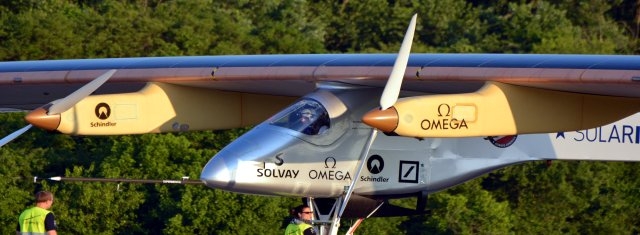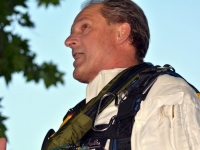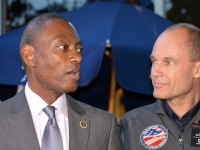Technology
The Solor Impulse lands at Lunken Airport
First solar airplane flies across US

The Solar Impulse
The Solar Impulse left San Francisco on May 3 and landed in Phoenix the next day. It departed Phoenix on May 22 and landed in Dallas the following day. It had been in St. Louis since June 4. New York's JFK International Airport will be the final destination in early July.
Although not originally scheduled to land in Cincinnati, it was decided due to winds and weather. Pilot Bertrand Piccard, doctor, psychiatrist and aeronaut, who made the first non-stop round-the-world balloon flight, said they received permission almost "within 30 seconds of the request" from Lunken Airport manger Fred Anderton.
Mayor Mark Mallory welcomed the crew of Solar Impulse, stated that this added to the history of the airport along side such previous visitors as Charles Lindbergh and The Beetles. Mayor Mallory commented on Lunken's "cutting edge" technology and was honored to be part of the first ever solar-powered airplane landing in Cincinnati's history. The Mayor went on to say how proud Cincinnati was of the crew of Solar Impulse and not only were they a part of aviation history, but now a part of Cincinnati history as well.
The plane is scheduled to depart around 7am Saturday June 16th en route to Washington's Dulles International Airport. The plane is fueled by 11,628 silicon solar cells mounted across the wings and horizontal stabilizer that power four electric engines. The Solar Impulse's journey can be tracked live at www.solarimpulse.com
Liability for this article lies with the author, who also holds the copyright. Editorial content from USPA may be quoted on other websites as long as the quote comprises no more than 5% of the entire text, is marked as such and the source is named (via hyperlink).









